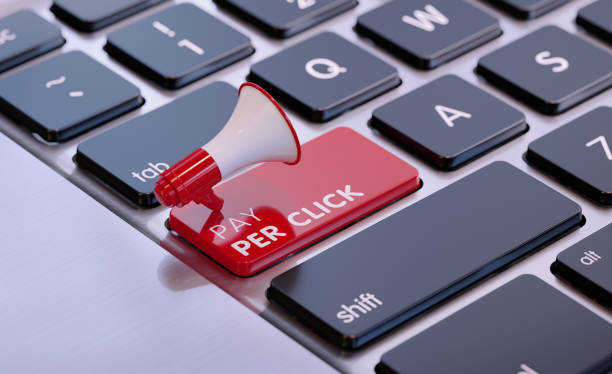This appendix serves as a comprehensive guide to help you navigate the key terms and tools related to PPC (Pay-Per-Click) marketing. Whether you’re new to PPC or looking to refine your campaigns, understanding the terminology and the right tools is crucial for success. In this section, we’ll break down essential PPC terms, discuss top tools for PPC management, and provide insights on PPC platforms.
Glossary of PPC Terms
Understanding PPC terminology is the first step toward mastering paid search marketing. Below are some of the most important terms every PPC marketer should know:
Cost Per Click (CPC)
CPC refers to the amount of money you pay each time someone clicks on your ad. It is one of the main metrics used to evaluate the performance of a PPC campaign. A lower CPC typically indicates a more cost-efficient ad campaign.
Click-Through Rate (CTR)
CTR is the percentage of people who click on your ad after seeing it. It’s calculated by dividing the number of clicks by the number of impressions and multiplying by 100. A higher CTR generally suggests that your ad is relevant and compelling to the audience.
Conversion Rate (CVR)
The conversion rate measures the percentage of users who take a desired action after clicking on your ad, such as making a purchase or filling out a contact form. A higher CVR means that your ads are successfully encouraging users to complete your desired actions.
Quality Score
Quality Score is a metric used by Google Ads to measure the quality and relevance of your ads, keywords, and landing pages. Higher Quality Scores lead to lower CPC and better ad placement. Google rewards ads with high relevance and a positive user experience.
Impressions
An impression is counted every time your ad appears on a search engine results page (SERP) or a website within a display network, regardless of whether the user clicks on it or not.
Ad Rank
Ad Rank is the position of your ad on a search engine results page. It is determined by factors like your bid amount, Quality Score, and the expected impact of extensions and other ad formats.
Cost Per Acquisition (CPA)
CPA is the cost of acquiring a customer through your PPC campaign. It is calculated by dividing the total cost of the campaign by the number of conversions. Lower CPA means you are acquiring customers at a more efficient cost.
Return on Ad Spend (ROAS)
ROAS measures the revenue generated from your PPC ads relative to the cost of running the ads. It is calculated by dividing revenue by ad spend. A higher ROAS indicates that your PPC campaign is profitable.
Remarketing
Remarketing refers to the process of targeting users who have previously interacted with your website or app but did not convert. This can be done by displaying ads to them across the web or on social media platforms.
Landing Page
A landing page is the page a user is directed to after clicking on your ad. It is essential that your landing page aligns with your ad copy and offers a clear and compelling call to action.

FAQ’s Common Questions About PPC and SEO
1. What’s the difference between PPC and SEO?
PPC (Pay-Per-Click) is a paid advertising model where businesses pay for clicks on their ads. SEO (Search Engine Optimization) focuses on improving a website’s organic ranking on search engines through strategies like content creation, link-building, and keyword optimization. While PPC offers immediate results, SEO builds long-term organic visibility.
2. How much should I spend on PPC?
The amount you should spend on PPC depends on your industry, competition, and goals. Generally, businesses allocate a portion of their marketing budget to PPC campaigns, often ranging from $500 to $10,000 per month, depending on their size and the platform used.
3. How do I improve my Quality Score in PPC?
To improve your Quality Score, focus on creating relevant and high-quality ads, selecting the right keywords, and ensuring that your landing pages are optimized for both relevance and user experience. A better Quality Score can lower your CPC and improve your ad placement.
4. What are the benefits of using PPC remarketing?
PPC remarketing targets users who have visited your site but did not convert. This strategy is beneficial because it keeps your brand top of mind and encourages users to complete the action they initially abandoned, leading to higher conversion rates.
5. What is the importance of A/B testing in PPC?
A/B testing helps you compare different versions of your ads or landing pages to determine which elements perform best. Testing variations of headlines, images, CTAs, and more allow you to optimize your campaigns for maximum effectiveness.
Tools and Resources for PPC Management
Effective PPC campaign management requires the right set of tools. Below are some of the most useful tools and platforms for managing PPC campaigns.
Best PPC Reporting Tools
Google Ads
Google Ads provides a comprehensive set of reporting tools that allow you to track key metrics such as CTR, CPC, conversions, and more. The platform also includes tools for analyzing ad performance, identifying high-performing keywords, and optimizing bids.
- SEMrush
SEMrush is a popular tool for both PPC and SEO. It provides detailed reports on keyword performance, competitive analysis, and ad strategies. SEMrush also helps identify the best keywords for PPC campaigns and tracks how your ads are performing against competitors. - Kenshoo
Kenshoo is an advanced PPC management platform that offers robust reporting capabilities. It is especially helpful for larger businesses and agencies that need to manage multiple campaigns across multiple channels. Kenshoo also provides tools for bid management and performance forecasting. - SpyFu
SpyFu is a competitive intelligence tool that helps you analyze your competitors’ PPC strategies. By identifying the keywords they target and their ad copy, you can develop better strategies for your campaigns. - WordStream
WordStream is a PPC management platform that provides easy-to-read performance reports. It offers tools to optimize keywords, manage bids, and run A/B tests. WordStream also integrates with Google Ads and Bing Ads for streamlined reporting.
Suggested Posts:
PPC Platforms to Use for Marketing
Google Ads
As the largest PPC platform, Google Ads offers extensive reach through search results and display ads. It also includes advanced targeting options, such as location, device, and audience segmentation. Google Ads is ideal for businesses of all sizes.
Bing Ads
Bing Ads (now Microsoft Advertising) is a valuable alternative to Google Ads, offering a slightly different audience demographic. While its reach is smaller, it can be less competitive and more cost-effective for certain industries.
Facebook Ads
Facebook Ads provides highly granular targeting options, allowing businesses to target users based on demographics, interests, behaviors, and more. It’s an ideal platform for B2C businesses looking to engage users in visually appealing ways.
LinkedIn Ads
LinkedIn Ads are especially useful for businesses targeting other businesses (B2B). The platform’s targeting options allow you to reach decision-makers based on job titles, industries, and company sizes, making it ideal for professionals and service providers.
Twitter Ads
Twitter Ads provide a more conversational and real-time advertising option. Twitter allows you to target specific interests, keywords, and even people who follow similar accounts, making it a great choice for brands that want to engage with a more active, dynamic audience.
Instagram Ads
Instagram, a subsidiary of Facebook, provides visually-driven advertising options that integrate well with lifestyle and consumer brands. Instagram’s advertising is particularly effective for businesses that rely on strong visual content.

Key Takeaways
- PPC terms like CPC, CTR, and Quality Score are fundamental to understanding and managing paid campaigns effectively.
- Combining PPC and SEO strategies can help businesses achieve both immediate visibility and long-term organic growth.
- PPC management tools like Google Ads, SEMrush, and WordStream help optimize campaigns and improve performance by tracking key metrics and providing insights.
- A/B testing and remarketing are critical strategies for improving PPC campaign performance and increasing conversion rates.
- Selecting the right PPC platform, such as Google Ads, Facebook Ads, or LinkedIn Ads, is essential for targeting the right audience and maximizing ROI.
This appendix has provided a comprehensive overview of the key PPC terms, tools, and platforms necessary for running successful paid search campaigns. Understanding the jargon, utilizing the best tools, and choosing the right platforms are all crucial components of a strong PPC strategy. With the right resources, businesses can improve their PPC performance, drive more traffic, and ultimately increase conversions. By regularly optimizing campaigns and staying informed about new tools and trends, businesses can maximize the effectiveness of their PPC marketing efforts, ensuring long-term success.
Related FAQs
1. How can I reduce my PPC costs?
To reduce PPC costs, focus on targeting long-tail keywords, improving ad relevance, and optimizing landing pages for better Quality Scores. You can also use negative keywords to avoid wasting ad spend on irrelevant traffic.
2. What tools can help improve PPC performance?
Tools like Google Ads, SEMrush, and WordStream provide insights, help manage campaigns, and enable detailed reporting for improved performance.
3. What are the most common PPC mistakes to avoid?
Common PPC mistakes include poor keyword targeting, insufficient negative keyword use, not tracking conversions, and failing to optimize landing pages. Avoiding these mistakes helps improve ad performance and ROI.
4. How do I measure the success of my PPC campaigns?
Key metrics to track include CPC, CTR, conversion rate, and ROAS. These metrics help measure the effectiveness of your ads and determine if your campaigns are achieving your business goals.
5. What’s the difference between CPC and CPA?
CPC (Cost Per Click) measures the cost of a single click on an ad, while CPA (Cost Per Acquisition) calculates the cost of gaining a customer or lead from that click. CPC is important for traffic, while CPA is crucial for measuring actual conversions.
